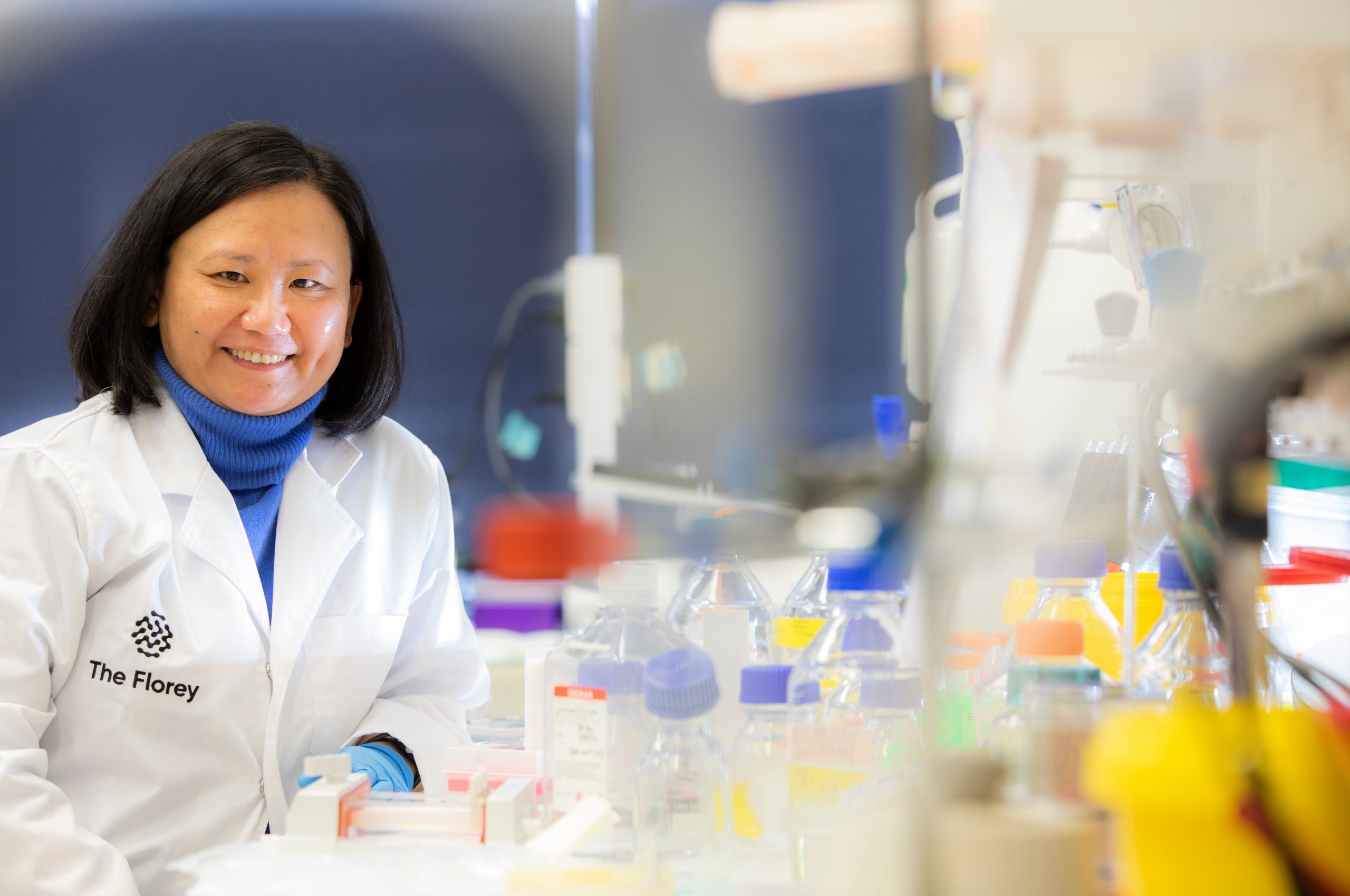La Trobe University’s deployment of NVIDIA DGX H200 systems are the first to be commissioned at a university in Australia, giving scientists the ability to push the boundaries of AI-driven medical and biotech research.
The supercomputer’s arrival follows the launch last year of La Trobe’s Australian Centre for Artificial Intelligence in Medical Innovation (ACAMI), the world’s first university centre specialised in using AI to develop immunotherapies, cancer vaccines, med-tech and healthcare.
This aligns with La Trobe’s bold ambition to transform research, education, student support and business operations by applying an ‘AI-first’ approach, with its Responsible AI Adoption Strategy.
La Trobe Vice-Chancellor Professor Theo Farrell said the University’s strategic intent was to be at the forefront of AI innovation and education.
“AI is revolutionising society at great speed and La Trobe is committed to ensuring that our students and the communities we serve are empowered to adapt and succeed in this rapidly changing world,” Professor Farrell said.
“The potential of AI in medical and biotech research is huge. NVIDIA DGX H200 systems enable faster translation of research into clinical trials and personalised therapies.
“La Trobe’s Australian Centre for AI in Medical Innovation also provides a hands-on training ground for Australian scientists, clinicians and data scientists, building sovereign AI expertise that is crucial for rural and Indigenous health initiatives, biotech competitiveness and the nation’s long-term digital health resilience.”
Cisco Research Chair in AI and ACAMI Director and Chief Scientist Professor Wei Xiang said AI has the potential to halve drug-development times, accelerating discovery and clinical trials of new treatments.
"The DGX H200 supercomputer is among the fastest all-round AI supercomputing infrastructure platforms that one can obtain,” Professor Xiang said.
“With AI, we can develop precision medicine that addresses the unique characteristics of each patient, significantly improving treatment.”
The DGX H200 infrastructure and ACAMI are backed by a $10 million Victorian Government investment through mRNA Victoria, positioning La Trobe University as a national hub for AI-in-medical innovation.
Fuelling discovery in medical research
La Trobe will partner with multiple organisations through ACAMI to collaborate on drug discovery and medical innovation.
One of the first projects to benefit from the AI-processing performance of the DGX H200 systems is a collaboration between ACAMI and The Florey Institute of Neuroscience and Mental Health, researching Niemann-Pick disease type C, a progressive neurodegenerative disorder in children.

Childhood dementias, such as Niemann-Pick and Menkes disease, occur when babies are born with mistakes in the genetic instruction for proteins that are essential for the brain to function normally.
Dr Ya Hui Hung, the project lead at The Florey (pictured above), said her team will use DGX H200 systems to assist in the development of gene therapy to treat the disorder.
“The super processing performance of NVIDIA DGX H200 systems will help us to explore more options and get results faster,” Dr Hung said.
The unprecedented computing capabilities of DGX H200 means complex three-dimensional imaging and large-scale models that once took days to produce are now completed in hours.
“This will dramatically reduce the time it takes to develop life-changing treatment for 700,000 people worldwide living with childhood dementia,” Dr Hung said.
“It could also provide insights into other forms of dementia, which affect over 400,000 Australians and is projected to double by 2058.”
Sudarshan Ramachandran, country manager - enterprise, ANZ at NVIDIA, said: “AI-powered infrastructure is unlocking a new wave of discovery, giving researchers the tools needed to advance healthcare and medical research.
“With La Trobe’s deployment of NVIDIA DGX H200, Australian researchers can accelerate breakthroughs and set new standards for innovation and patient care.”
The systems will be hosted at NEXTDC M2 in Tullamarine, one of the few operations in the Southern Hemisphere which has AI-ready infrastructure available to connect the AI supercomputer to high density power and innovative cooling solutions uniquely designed for high performance computing.
NEXTDC CEO and managing director Craig Scroggie said he was proud to be strengthening the company's valued relationship with La Trobe University.
“This collaboration not only creates one of the country’s leading research platforms, it empowers the critical research and innovation required to unlock the future of AI-driven medical and biotech advancement to improve patient treatment for many Australians."
ACAMI will sit within La Trobe’s Research and Innovation Precinct, a core component of La Trobe University City, positioning it as a place of innovation and collaboration.
The AI industry is expected to create 200,000 jobs in Australia by 2030.
NVIDIA DGX H200 facts:
- Each DGX H200 features eight NVIDIA Hopper-architecture GPUs with a total of 1.128 TB of HBM3e memory at 4.8 TB/s bandwidth.
- The La Trobe AI platform is located at NEXTDC, M2 Melbourne.
- Three NVIDIA DGX H200 systems will be initially commissioned.
- It is the first deployment of DGX H200 systems to be commissioned at a university in Australia.
CAPTION: Minister for Economic Growth and Jobs Danny Pearson, La Trobe Vice-Chancellor Professor Theo Farrell and NEXTDC CEO and managing director Craig Scroggie at the NVIDIA supercomputer's launch.
Media enquiries:
Robyn Grace – r.grace@latrobe.edu.au, 0420 826 595



